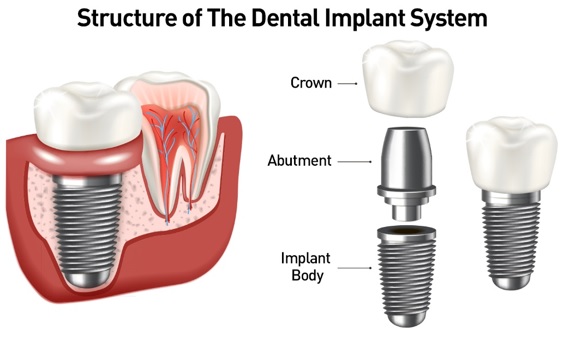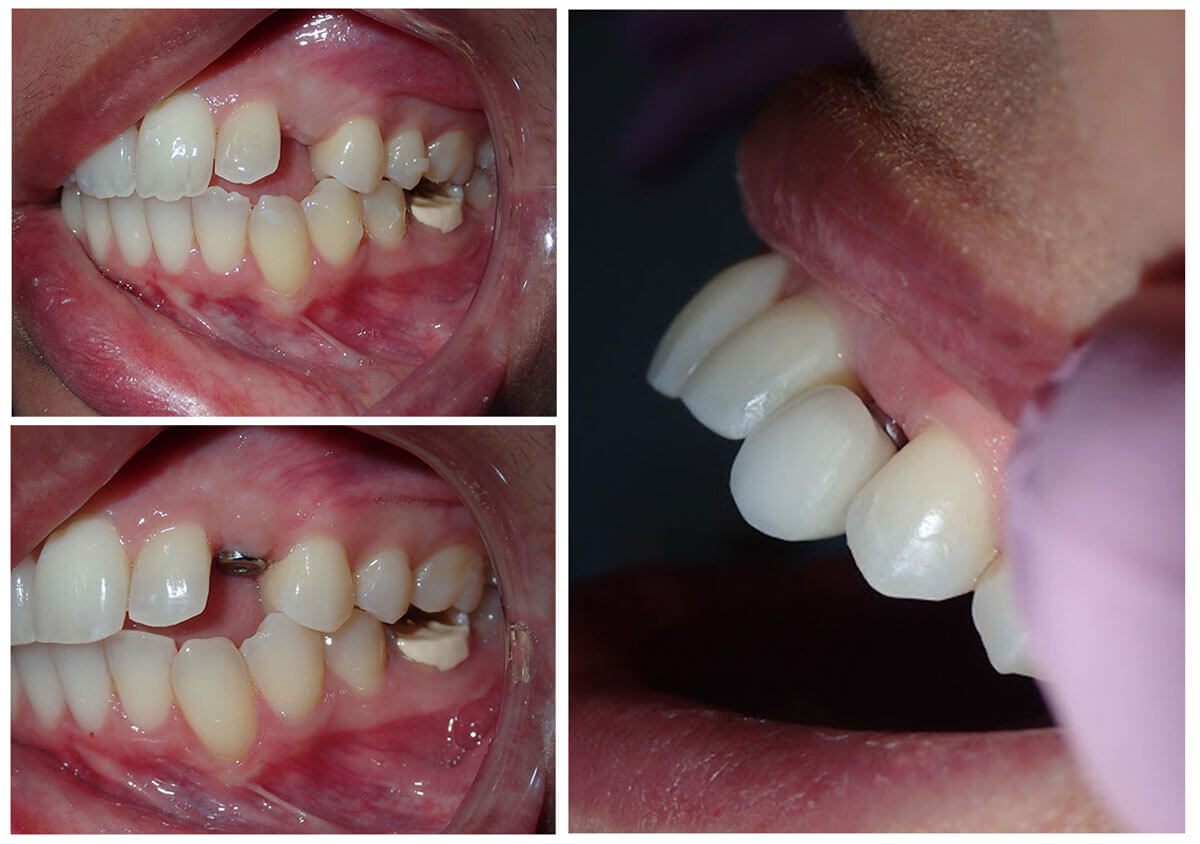Facts About Dental Implants Revealed
Wiki Article
What Does Dental Implants Mean?
Table of ContentsIndicators on Dental Implants You Need To KnowThe Best Strategy To Use For Dental ImplantsDental Implants for DummiesRumored Buzz on Dental Implants
are clinical devices surgically implanted right into the jaw to bring back an individual's capability to eat or their look. They offer support for man-made (fake) teeth, such as crowns, bridges, or dentures. When a tooth is shed due to injury or illness, an individual can experience difficulties such as rapid bone loss, faulty speech, or adjustments to chewing patterns that lead to discomfort.
Framework of The Dental Implant System choosing oral implants, talk with your oral company regarding the possible advantages and threats, and whether you are a candidate for the treatment. Points to take into consideration: Your general wellness is a vital variable in determining whether you are an excellent prospect for oral implants, how long it will require to heal, and just how long the implant might remain in place.
Smoking cigarettes may impact the healing process and reduce the lasting success of the dental implant. The recovery process for the implant body may take several months or longer, throughout which time you normally have a short-term joint instead of the tooth. the oral implant procedure: Carefully adhere to the oral hygiene directions offered to you by your dental service provider.
The Basic Principles Of Dental Implants
Implant failure can cause the demand for an additional medical procedure to repair or change the dental implant system. Restores the capacity to chew Brings back aesthetic appearance Assists maintain the jawbone from reducing as a result of bone loss Maintains the health of the bordering bone and gum tissues Helps maintain surrounding (neighboring) teeth stable Boosts lifestyle Damages to surrounding natural teeth during implant placement Injury to the surrounding cells throughout surgical procedure, such as sinus perforation Injury throughout surgical treatment (as an example, crack of surrounding jawbone) Poor function, such as really feeling like the teeth do not attack with each other generally An experience that the tooth is loose or turning in place resulting from an abutment screw loosening up Implant body failing (looseness of the dental implant body) as a result of systemic infection, which may be much more likely in people with uncontrolled diabetics issues due to neighborhood infection in bone and periodontals sustaining the dental implant body because of delayed recovery, which may be most likely in individuals who smoke Difficulty cleaning up the gums around the dental implant, resulting in inadequate oral hygiene Untreated gum Continued disease Post-surgical feeling numb because of nerve impingement or damage Constantly notify healthcare providers and imaging professionals that you have dental implants prior the original source to any magnetic resonance imaging (MRI) or x-ray treatments.FDA is not familiar with any kind of unfavorable events reported for MRI or x-ray procedures with dental implants. Oral implants systems are usually made of materials that adhere to worldwide agreement standards of the International Organization for Standardization (ISO) or ASTM International. These requirements have details of what makes a safe material.
Oral dental implant systems are reviewed according to international consensus requirements. Biocompatibility screening, to show that physical contact with the tool does not create issues like irritation or allergic response, is component of the analysis that helps ensure the materials in the oral implant system are risk-free and do not trigger damaging effects when implanted in individuals.

Dental Implants for Beginners
Some individuals are not eligible for dental implant surgical procedure. It is for oral specialists to operate people with: intense illnessuncontrollable metabolic diseasebone or soft tissue illness or infectionIf these issues are resolved, a person can have the surgical treatment. Dental Implants. In, dental cosmetic surgeons avoid from running on individuals with: If people with any of the above undergo dental implant surgical treatment, there is a higher risk of the dental implant falling shortSome individuals have a jawbone irregularity that avoids sufficient bone for a dental implant from creating. In such situations, a specialist may need to do a ridge adjustment. This involves lifting the gum to expose the location of flawed bone. The doctor will after that make use of a bone or bone replacement to fix and develop the area.
Dental implant surgical procedure is a tailored procedure. Provide you time to heal. Attach the message and last crown, bridge or denture.
Next, your surgeon will carefully place the dental implant into your jaw. Your surgeon will certainly reposition your gum tissues and close the incision with stitches (Dental Implants). If your implant is near the front of your mouth, your dentist will make a short-term tooth for you to put on till you recover. That way, you will not have a gap in your smile while you recoup.
Dental Implants Things To Know Before You Get This
Throughout the recovery phase, your jawbone must fuse to the dental implant. This process can take anywhere from 3 to 9 months.Once your dental implant heals, your dental professional can connect the abutment (little connector message) and your last reconstruction (crown, bridge or denture). This normally takes about one hour to complete and may require a 2nd small surgical treatment. You should not feel any discomfort during your oral implant procedure because your provider will certainly utilize drug to numb your gums.
Report this wiki page